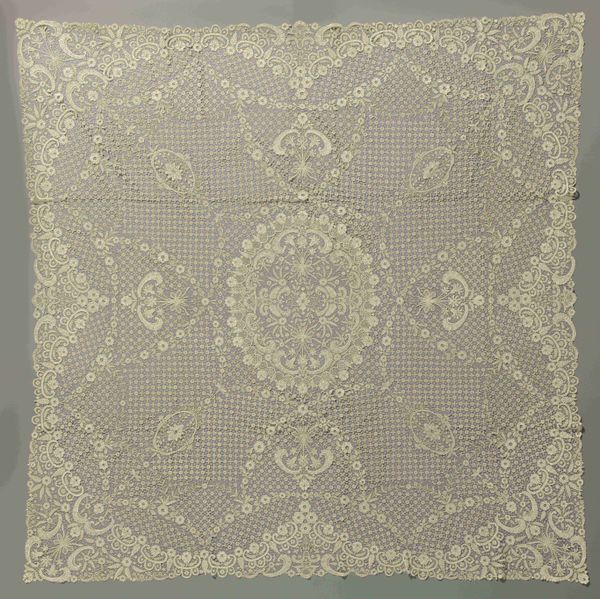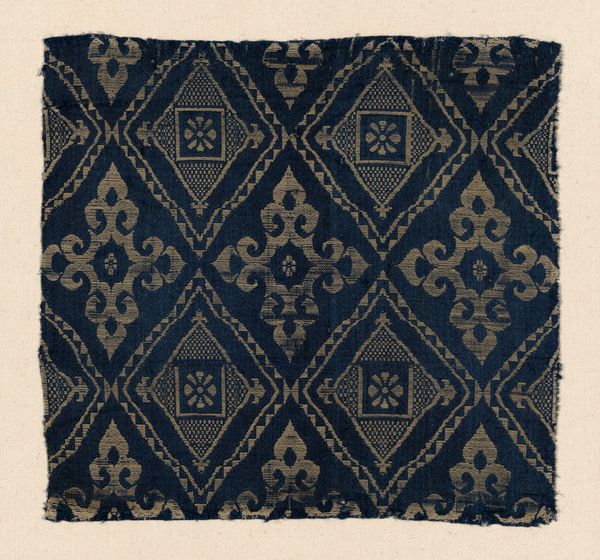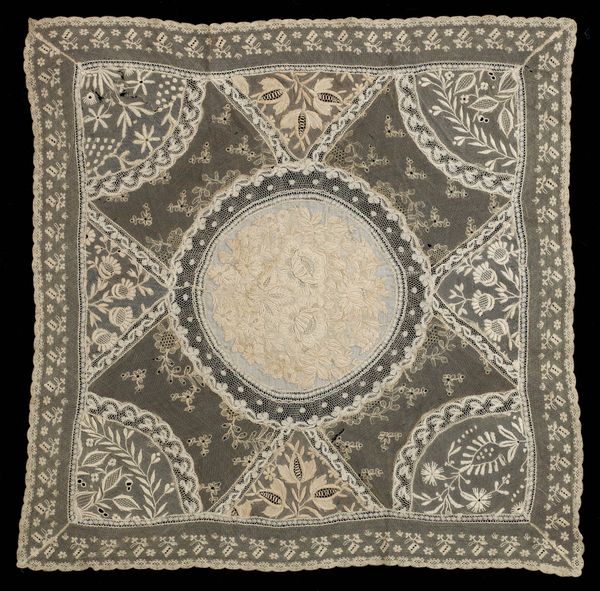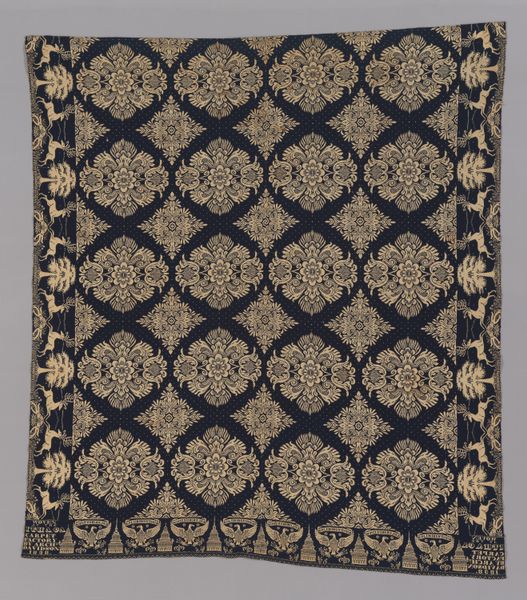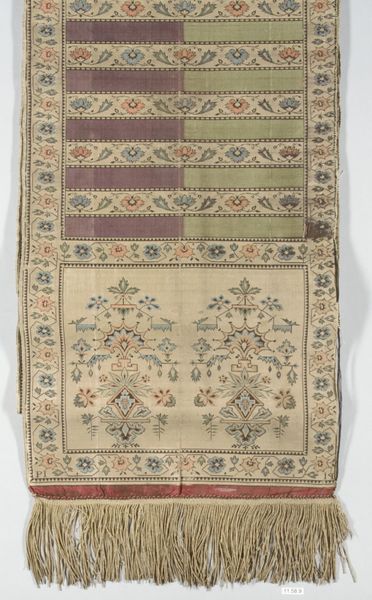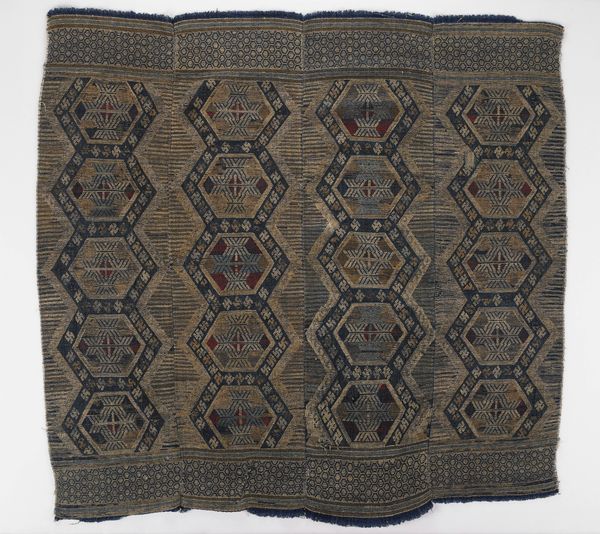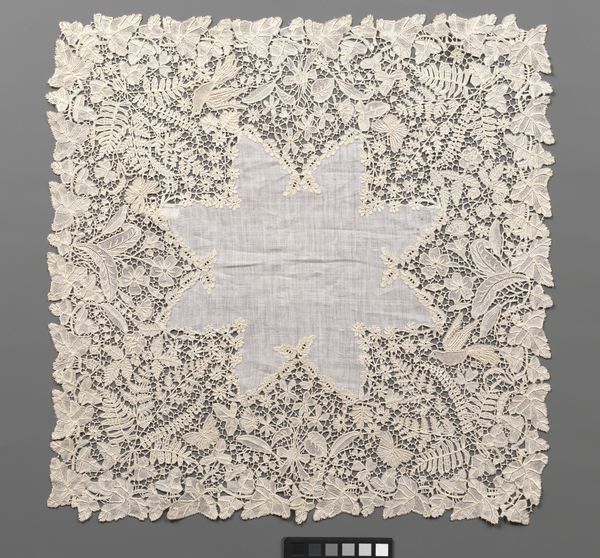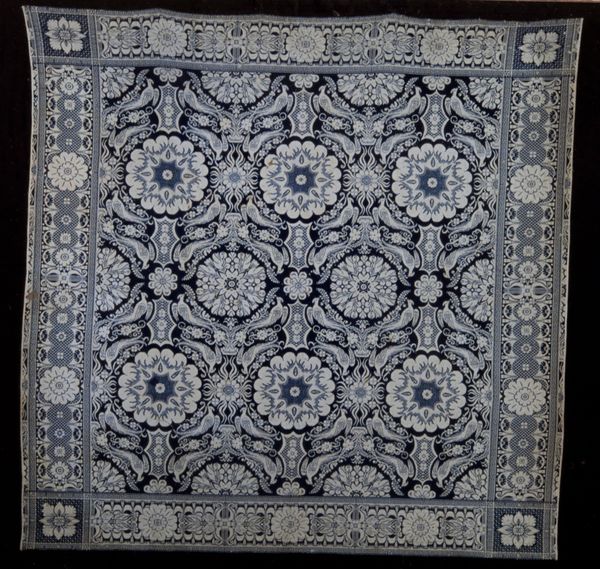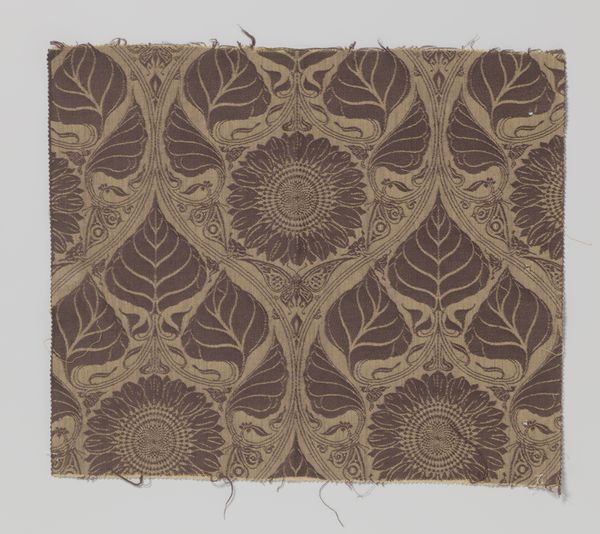
textile
#
textile
Dimensions: length 46 cm, width 46 cm
Copyright: Rijks Museum: Open Domain
Editor: This textile work, titled "Gebatikte sierdoek met gestileerde vlinders en sterren" dates back to around 1910, crafted by Willem Karel Rees. The repeating pattern and neutral tones give it a calming yet intricate presence. How would you interpret this piece within its historical context? Curator: Well, textiles like this open up fascinating discussions around Orientalism and Indigenism in the early 20th century. Considering Rees's artistic circle, one might ask how Dutch artists were engaging with, and perhaps appropriating, Indonesian batik techniques and motifs during a period of colonial influence. The question becomes, how much of this work celebrates cultural exchange, and how much does it perpetuate an exoticized view of the East for Western audiences? Editor: So, is it more about the power dynamics at play during its creation than the aesthetic appeal of the piece itself? Curator: Exactly! Think about where it would have been displayed, who the intended consumer was. The cultural value of batik in its original context versus how it’s being repackaged and consumed in Europe are fundamentally different. What do you notice about the central star motifs, in terms of potential symbolic or nationalistic messaging? Editor: Hmm, I see them, but I don't know if I see the "nationalistic messaging" within them yet, to be honest. The use of stylized butterflies also evokes nature, and feels almost decorative at first glance, until you contextualize them as signs of an art that was perhaps commodified. Curator: And that's where understanding the public role of art at that time becomes so important. How do you think a piece like this would be received differently today, considering our more critical understanding of cultural appropriation? Editor: I think the reception would definitely be more critical today. We are now more aware of the origins and meanings embedded in such artistic cultural symbols. Thank you, that definitely adds so much depth to what initially appeared to be just a pretty textile! Curator: Precisely. By investigating its historical background and its social implications, we have changed our point of view, hopefully providing an insightful view of this piece for listeners.
Comments
No comments
Be the first to comment and join the conversation on the ultimate creative platform.
